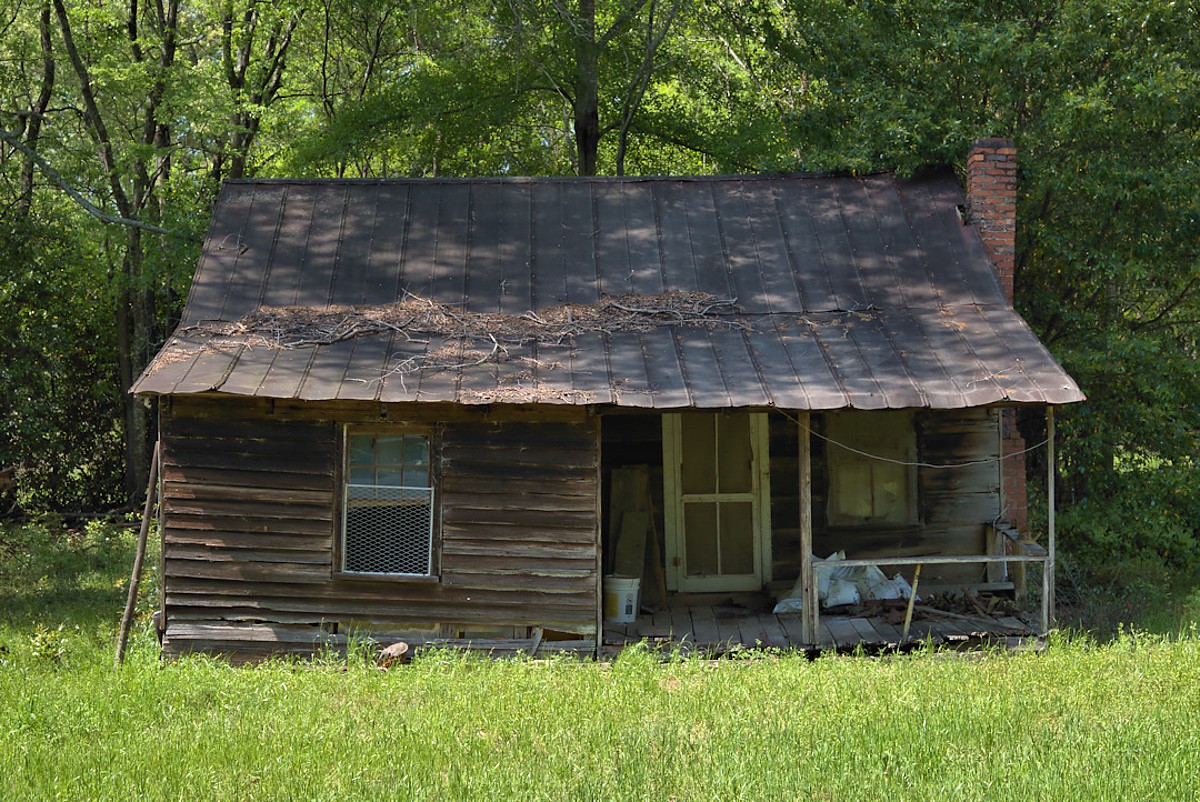
Brian Brown’s caption for this photo reads: “This hall-and-parlor cottage, complete with a preacher’s room, is a wonderful example of this historic vernacular form. While the romantic notion of a preacher’s room would suggest it hosted traveling preachers, it was more likely just an added room to accommodate a growing family. Perhaps visiting family used it, as well.” Photo provided.
By Elliott Brack
Editor and Publisher, GwinnettForum
April 18, 2023 | A photograph from the online site, Vanishing Georgia, showed a “preacher’s room” on a rural house in Wilkinson County which brought back memories of growing up in middle Georgia.
![]() Brian Brown of Fitzgerald roams the countryside photographing old and often broken-down scenes of Georgia’s past. His Vanishing Georgia is an extensive and worthwhile effort to show how Georgians of the past lived.
Brian Brown of Fitzgerald roams the countryside photographing old and often broken-down scenes of Georgia’s past. His Vanishing Georgia is an extensive and worthwhile effort to show how Georgians of the past lived.
My uncle and aunt were farmers, and lived in a house on a farm in Wilkinson County that had a preacher’s room. If rooms like it were not originally part of the house, later on part of the front porch was boarded up to become a room for the visitor. I’ve slept in such a room myself when visiting my uncle and aunt.
Preacher’s rooms originally were built in the days when many rural churches (of several denominations) had services only once a month. The Methodists grouped several nearby churches together in a circuit, alternating services at churches during the month. The ministers traveled that area on horse or in a buggy or wagon, and slept in preacher’s rooms in a member’s home when on that circuit visiting a particular church. Most often the minister stayed only one or two nights in such rooms, before returning to his own home.
It was a great honor for the church member to “put up” the minister, and of course, to feed him meals. The minister usually was asked to pronounce the blessing at meals. By the way, the family hosting the minister also tended to the horse or mule by putting the animal in the barn and feeding him also.
The preacher’s room was relatively small, primarily with a bed and night stand, and usually with no heat. Rural houses of that era had heat in a big living room and kitchen, but most bedrooms had no stove or chimney. To get warm, you went to the living room (which often had a bed in it for warmth for the main occupants) or better still, to the kitchen with its wood stove, where there was always heat.
Air conditioning? Forget it. This was in the day before electricity came to the rural areas I knew in Middle Georgia. And that’s one reason there was a porch to begin with: so people would not be boarded-up inside during the summer. The porch offered a bit more air stirring to combat the heat. That gave entrance to the hand-held paper fans with wooden handles. Every home had several fans, usually with the name of a funeral home printed on them, that day’s commercial advertisement vehicle.
- Have a comment? Send to: elliott@brack.net









Follow Us